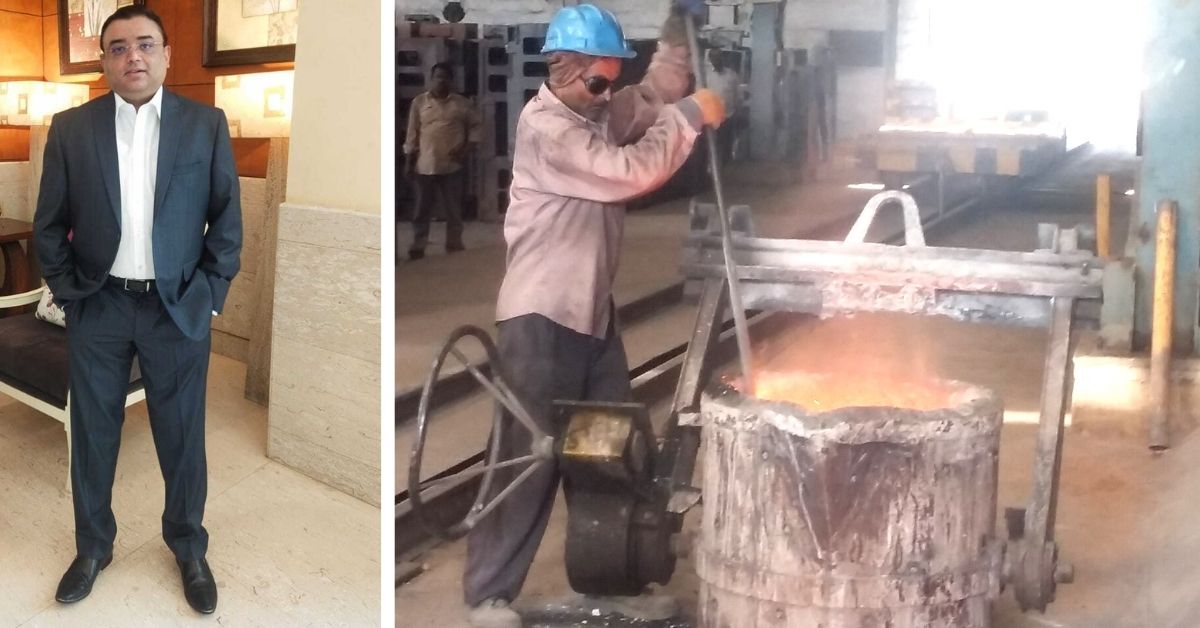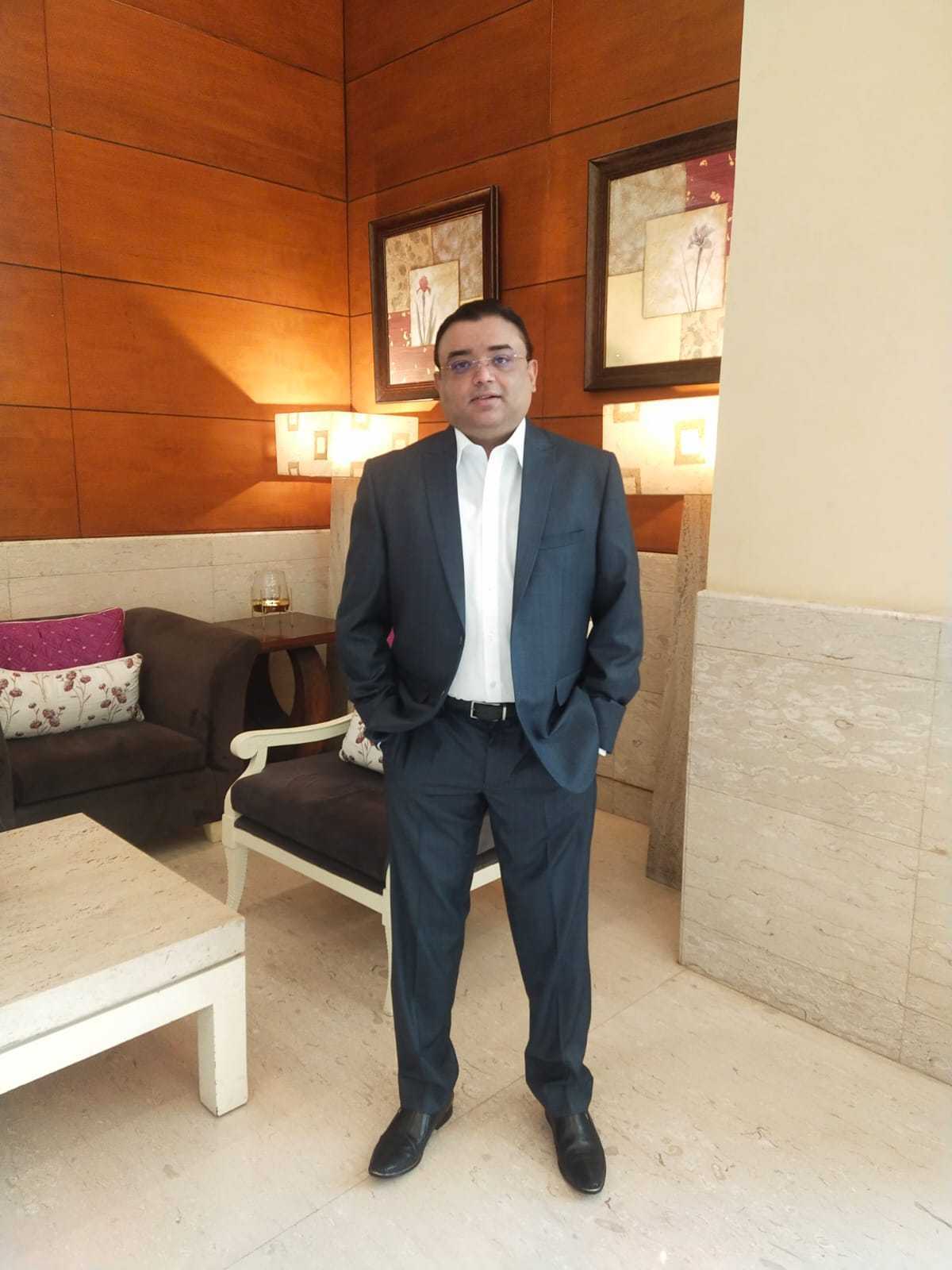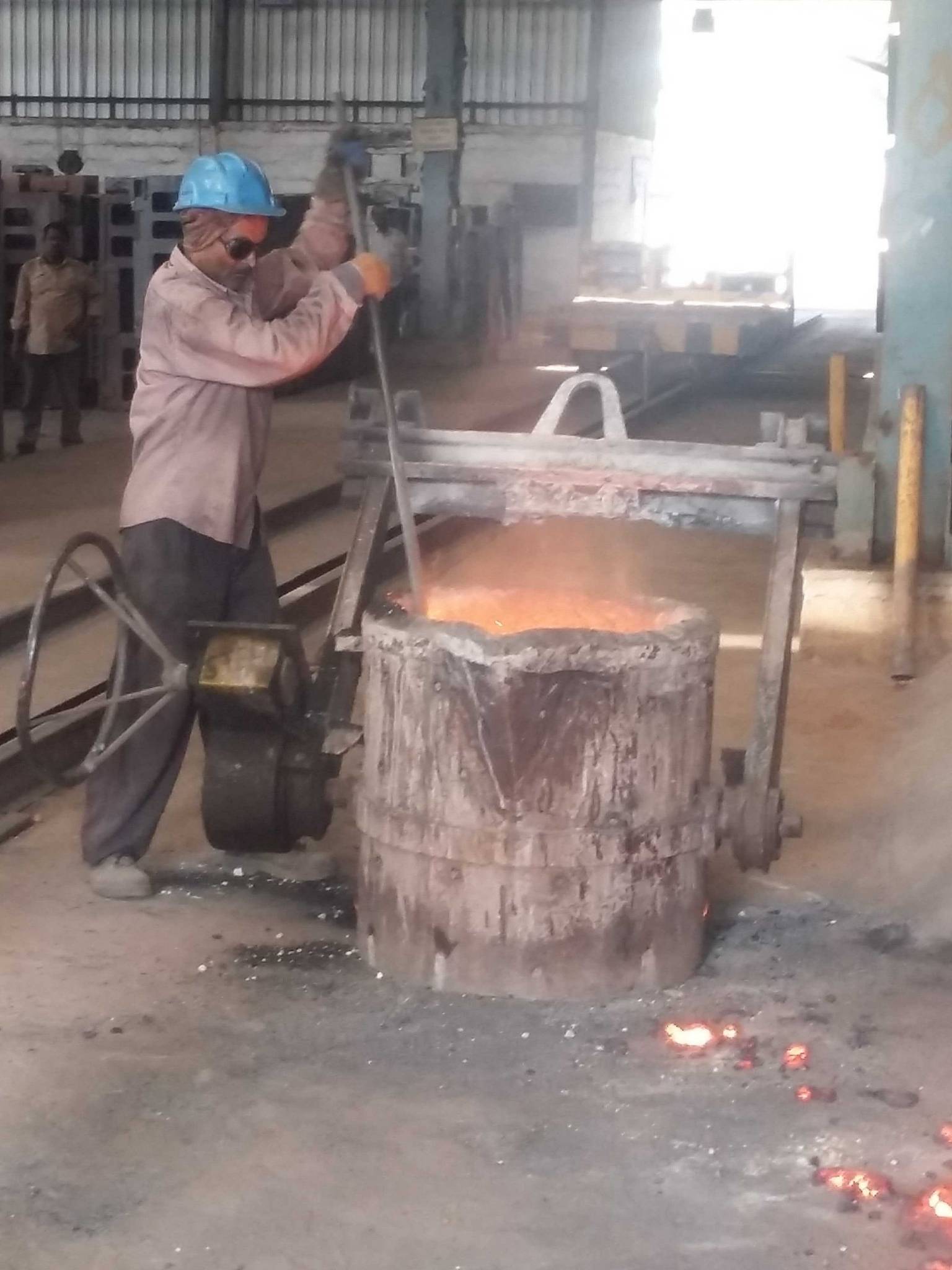Father-Son Duo’s Technology Turns Steel Waste into 99% Pure Metal Without Electricity
Satinder Nath Gupta and his son Sandeep launched Green Trek, a venture funded by IIT Mandi, that converts steel waste into molten metal without electricity.

During a site visit in 2012, Satinder Nath Gupta, a veteran in the iron and steel industry, noticed a pile of steel scrap lying around. This, he thought to himself, would most likely end up in a landfill somewhere.
By this time, he had been working in the foundry sector for 35 years, and believed it was time to do something remarkable. “The depletion of virgin natural minerals from the earth’s crust needs extensive research work,” he says, adding that it is important to explore options of reusing raw materials that are produced as a by-product in steel companies.
Sharing these ideologies was his son Sandeep Gupta.
Having just returned home from Dubai, where he had been working as an HR professional, Sandeep wanted to partake in his father’s quest to find a solution to the rising problem of steel waste.
United by this common philosophy, the duo decided to start experimenting with resources they had at hand. As Sandeep recounts, “A couple of years before this venture, a shipbuilding company in Dubai had plans to build a company in Southern India where spare parts would be produced. My dad had been asked to head the foundry operations.”
The project in Tamil Nadu was unfortunately shelved and didn’t see the light of day. The space, however, was vacant.
“We started carrying out our experiments here and these were aimed at converting steel waste into a usable material,” Sandeep tells The Better India.

A slow but sure technology
“Imagine a storage geyser in your home,” Sandeep tells me over a call. “When you switch it on, heat is generated and the water remains hot for a few hours. The process saves time and is efficient, but utilises a lot of electricity. In contrast, imagine heating water on a stove. One has to keep monitoring the process and it is tedious, but eliminates the need for electricity.”
Sandeep and his father’s technology is like the latter — a manual process that they say needs ‘focus and precise movements of hands’.
Thus began their experiments where they would test different parameters such as the grade of the raw material, the composition, heat, viscosity, amount of mixing and stirring needed for the molten metal, etc. Finally, after a number of tries, they perfected a reaction that showed promising results.
Sandeep says the technology is based on pyrometallurgy, which means using a high temperature to extract a pure form of metal. “The mineral form of the metal is thermally treated. It undergoes a physical and chemical transformation and the metal is yielded.”
The source of heat in these reactions comes from the combustion process, and the temperatures are high enough to melt the material in about five minutes.
“This instantaneous heat gives a clean melt and negligible smoke is generated during the process. It is indeed environmentally ideal for the purpose and saves on energy,” he adds.
Another advantage is the elimination of electricity during the reaction, as heat released during one reaction serves as the source of energy for the next.
Comparing this technology with the industrial standard one, Sandeep says, “In large-scale industries, scrap is added to the furnace for each reaction. The process is mechanised and automatic and thus these industries are able to produce thousands of tons of molten metal per month. Our technology borrows inspiration from the age-old practice of heating metal in a crucible. It is slow but eco-friendly.”
Once they were satisfied with these experiments, the duo conducted pilot tests in Tamil Nadu, Jammu and Bangalore, in the years 2007, 2014 and 2016 respectively, and obtained impressive results — 99 per cent pure molten metal, Sandeep says.
Father and son were now fuelled to broaden their horizons and set up Green Trek in Jammu in 2019. The startup, headed by Sandeep, is focused on green steel, which they believe is the future of the steel industry.

While the head office is in Jammu, the family plans to shift base to Kangra in Himachal Pradesh where the plant currently is.
“Steel waste is collected from rolling mills,” says Sandeep, adding that this is then used to produce molten metal with an iron content of 99.6 per cent. “This is then mixed with other metals to make various types of high-value steel and alloy castings for various industries.”
He goes on to add that 55 per cent of the steel waste is converted into usable products — such as heat-resistant steel, stainless steel, stone crushers, roller crushers, liners for cement plants, and hammers — while the rest is hard, like cinder. “This is used for filling up pits, road toppings, etc. The CO2 emissions during the reaction go up to five per cent and in each cycle, one metric tonne of molten metal is produced.”
The project is in the early stages of commercialisation and the duo is looking at patenting the technology towards the end of this year.
Recounting the challenges of setting up the venture, Satinder Nath says there were a few. “This method is not used to manufacture steel and alloy castings normally. Extensive trials and failures finally brought us to a stage where we could further recycle this waste into various iron, steel and alloy castings.”
Catalysing change through green technologies
During the course of their journey, Sandeep realised that along with building a green startup, he also wanted to build one that was ready for the future. “We are in the process of integrating artificial intelligence (AI) and machine learning (Ml) in the melting process,” he says. “We are collaborating with a company that is using these technologies for aluminium.”
Through this, Sandeep will be able to control the melt from wherever he is, and it will also give him and future industries they tie-up with a clear picture of the amount of CO2 saved, how much waste is being generated, at which stage the reaction is etc, he says.
Through their venture that is funded by IIT Mandi, the duo is rewriting an age-old script of how waste from industry can be channelised well. Sandeep believes that this process will enable more industries to come forward and step in a sustainable direction.
“The goal is to catalyse change, not to hold it back.”

Similar Story

Startup’s Innovation Could Help Millions Get Access to Better Brain Health At Home
Ivory, a pioneering age-tech startup founded by Issac John and Rahul Krishnan, aims to redefine the ageing experience by focusing on better brain health, through neuroscience-backed assessments, interactive games, and personalised solutions.
Read more >
If you found our stories insightful, informative, or even just enjoyable, we invite you to consider making a voluntary payment to support the work we do at The Better India. Your contribution helps us continue producing quality content that educates, inspires, and drives positive change.
Choose one of the payment options below for your contribution-
By paying for the stories you value, you directly contribute to sustaining our efforts focused on making a difference in the world. Together, let's ensure that impactful stories continue to be told and shared, enriching lives and communities alike.
Thank you for your support. Here are some frequently asked questions you might find helpful to know why you are contributing?


This story made me
-
97
-
121
-
89
-
167












